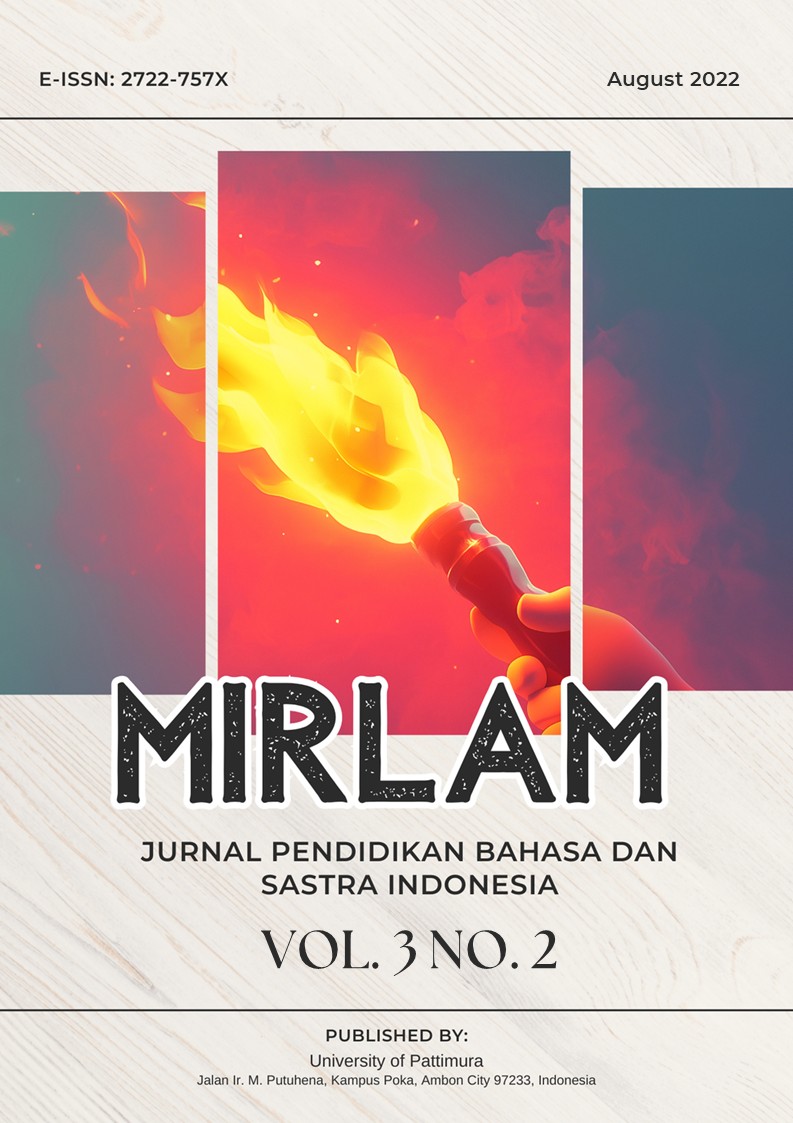Semantic Interference in the Malay Language of Ambon in the Event of Adolescents OSM Speaking from the Sub-District of Nusaniwe in Ambon City
Abstract
This study aims to describe the phenomenon of semantic interference in Ambon Malay as used by OSM adolescents in Nusaniwe District, Ambon City. Employing a qualitative descriptive approach, the research focuses on verbal data collected from two adolescents through observation, interviews, and video recordings. Data were analyzed using an interactive model encompassing data reduction, display, and conclusion drawing. The findings reveal that adolescents’ daily interactions are strongly influenced by their mother tongue (Ambon Malay), cultural conceptions, and the integration of foreign language elements, while their awareness of using Indonesian remains limited. Among the three theoretical categories of semantic interference—semantic extension, additive semantic interference, and replacive semantic interference—only semantic extension interference was found in the speech of the respondents. This indicates that the meaning of words in Indonesian is often expanded or shifted under the influence of Ambon Malay, resulting in deviations from standard usage. The study highlights the dominant role of Ambon Malay in everyday discourse, particularly among adolescents, and suggests that this linguistic behavior reflects broader sociolinguistic dynamics in Ambon City, where regional languages and cultural practices play a significant role in shaping communication patterns.
Downloads
Copyright (c) 2022 Mirlam: Jurnal Pendidikan Bahasa dan Sastra Indonesia

This work is licensed under a Creative Commons Attribution-ShareAlike 4.0 International License.


1.png)
